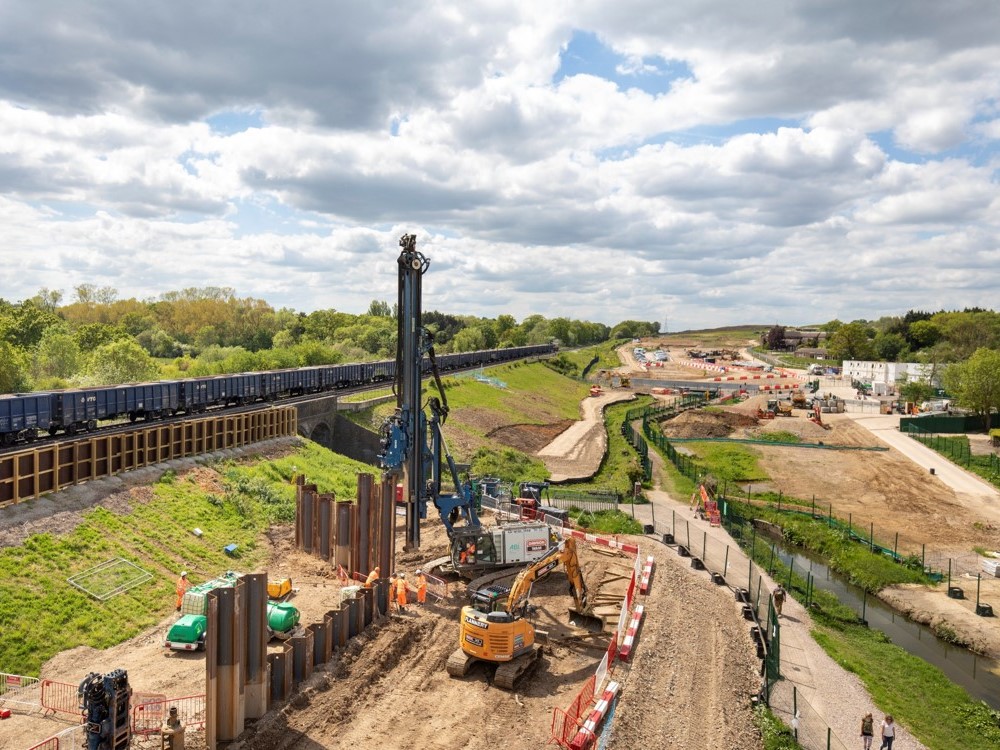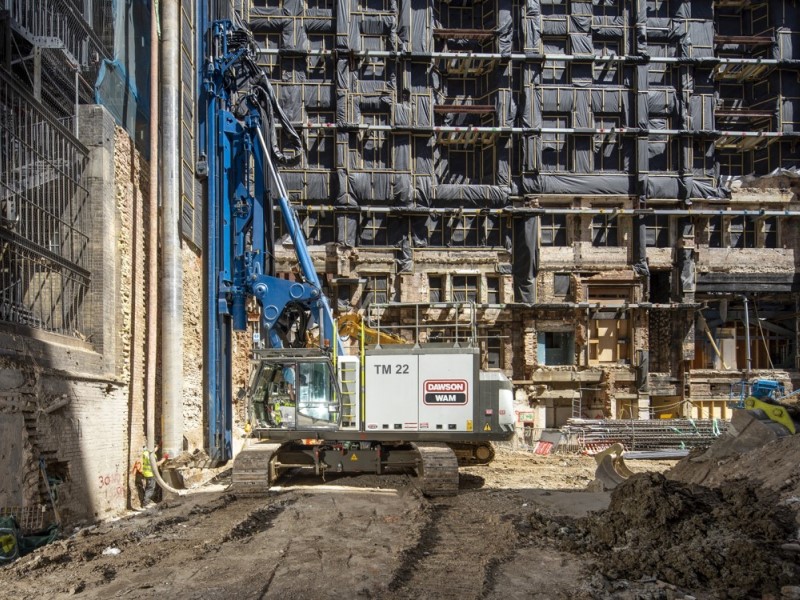Cambridge: University Arms King Post Wall
PROJECT DETAILS
CLIENT:
University Arms
DESIGN ENGINEER:
Cassidy Geotech
MAIN CONTRACTOR:
RG Carter
LOCATION:
Cambridge
DAWSON-WAM was contracted by RG Carter to design and construct a king post retaining wall to extend the depth of an existing basement to all substantial modernisation of the University Arms in Cambridge.
Commission in 1830, Cambridge’s oldest hotel, the University Arms has grown and evolved in line with Cambridge’s expansion as a City. Overlooking Parker’s Piece the revitalised hotel is now set to continue to contribute to Cambridge’s history for years to come.
The works to the hotel involved the substantial demolition and rebuilding of the hotel, significant façade retention to listed Southern exterior and increasing the depth of the existing half storey basement by 1.5m.
Due to the extent and sensitive nature of services running along the road to the Northern extent of the site it was decided that it was impractical to remove the existing basement retaining wall. As such a strategy had to be developed to allow the existing wall to remain in place, to allow the basement to be deepened by 1.5m and to maximise the footprint of the basement.
DAWSON-WAM attended a number of design development meeting with a very proactive RG Carter team to develop a unique solution utilising DAWSON-WAM’s close proximity Cased CFA system to install piles extremely close to the existing retaining wall. King posts of 254UC89 were then fabricated with supporting wings which provided greater bearing area for the existing retaining wall. Below the existing basement slab precast panels were installed to retain the ground below the existing retaining wall. This king post wall was then combined with the
In total 40m of king post wall was installed with King Posts at 2.5m centres. King posts were formed using a cased CFA system to install concrete piles into the ground. Steel beam sections were then installed into the wet piles to tight tolerances. Finally precast panels were delivered and installed in a sequenced method to ensure the stability of the existing wall was maintained at all times.



